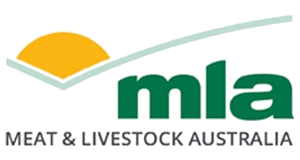GonaConTrial in Heifers and bull calves (R12/3145)
| Project start date: | 01 May 2010 |
| Project end date: | 30 June 2014 |
| Publication date: | 01 May 2013 |
| Project status: | Completed |
| Livestock species: | Grassfed cattle |
| Relevant regions: | National |
|
Download Report
(1 MB)
|
|
Summary
The castration of bulls is used to suppress aggressive and sexual behaviour and to influence growth and carcase characteristics. A goal of industry is to find a practical and acceptable alternative to surgical removal of the testes and the use of vascular constriction devices that cause testicular atrophy. The vaccination of bulls against gonadotrophin releasing hormone (GnRH, immunocastration) has been researched as an alternative to castration for over 35 years. GnRH has been the target of choice for an anti-reproductive vaccine as under normal circumstances GnRH initiates the reproductive-endocrine cascade responsible for the gametogenic and steroidogenic functions of the gonads, in both males and females.
Vaccination against GnRH, and the neutralisation of GnRH action, achieves the dual objectives of controlling behaviour and carcase characteristics in bulls. A limited number of commercial vaccines that induce an immunocastration response in bulls are available but none is effective for sufficient duration to be considered suitable for broad-scale practical application in extensive beef production systems. GonaConTM is a GnRH vaccine that has induced longer-term suppression of gonadal function in wildlife including bison. The latter suggested that GonaConTM could potentially also induce a longer-term immunocastration response in cattle. A previous MLA funded project (referenced below) investigated the utility of GonaConTM to suppress ovarian function and prevent ovulation in heifers. It was found that approximately 50% of heifers continued to have suppressed ovaries at 331 days after secondary vaccination, at which time the project ended.
The doses of GonaConTM used in the above project could be considered relatively low for cattle which may have explained, in part, continued ovarian suppression in only about 50% of vaccinated heifers. Also, the heifer project utilised a relatively small number of animals. The question remained, therefore, whether higher doses of GonaConTM would induce a more uniform and longer-term suppression of ovarian and testicular function in cattle. The project in heifers recommended that higher doses of GonaConTM should be evaluated in cattle and this was addressed in the current project using bull calves.
More information
| Project manager: | Jim Rothwell |
| Primary researcher: | University of Queensland |


